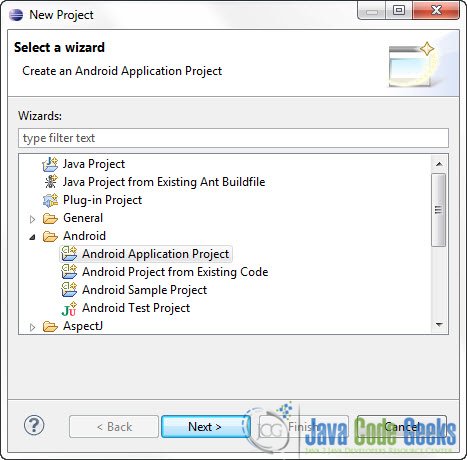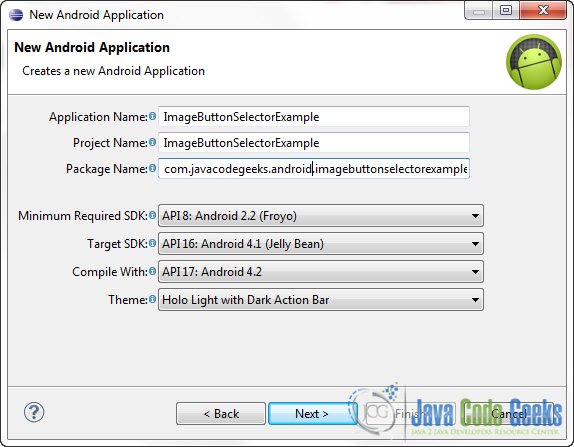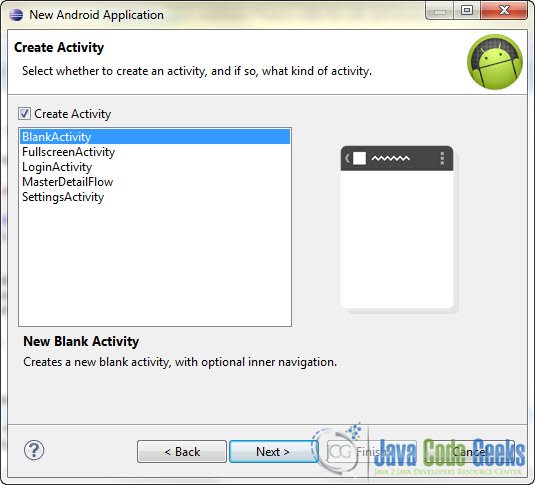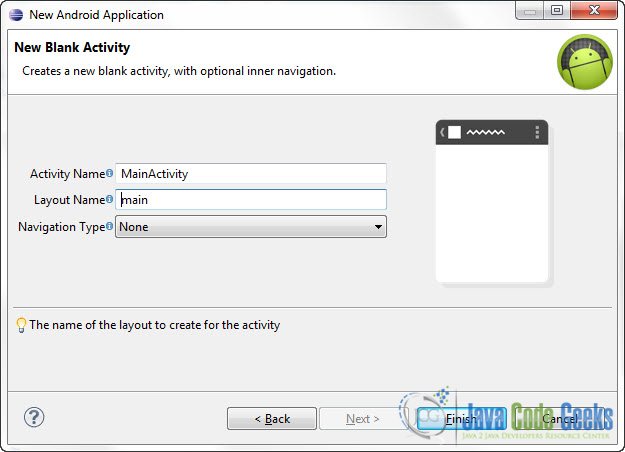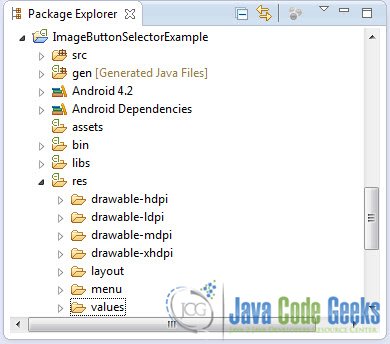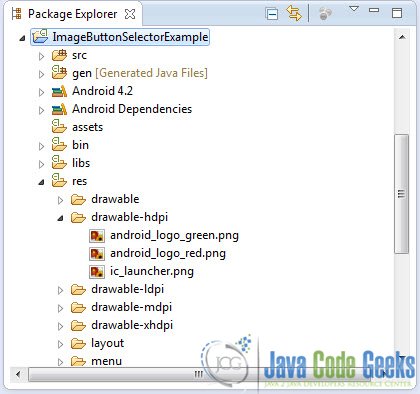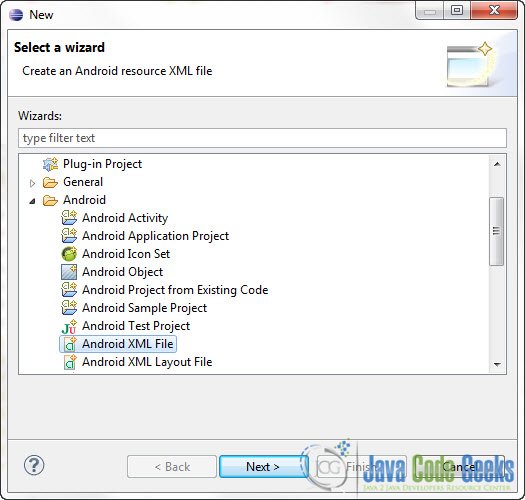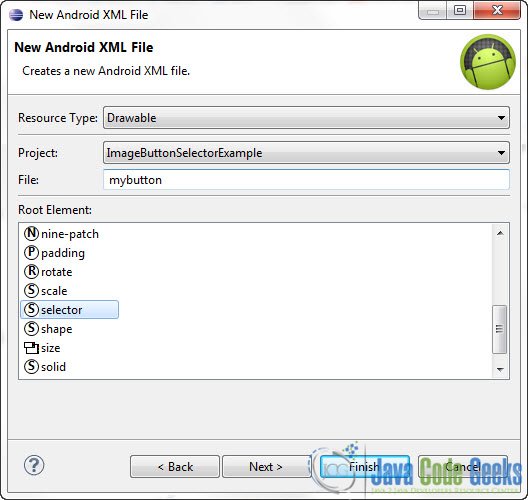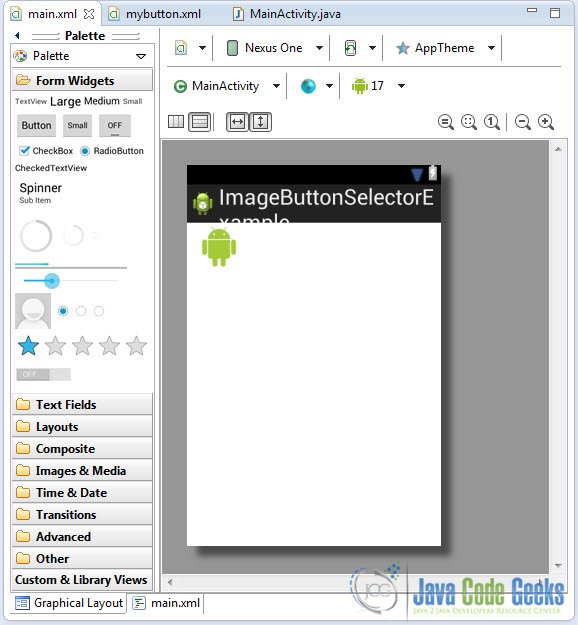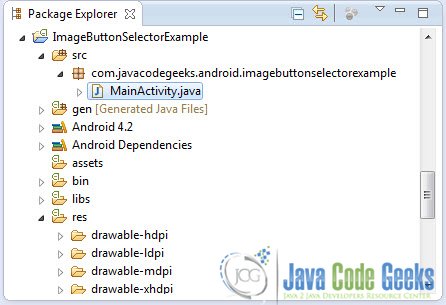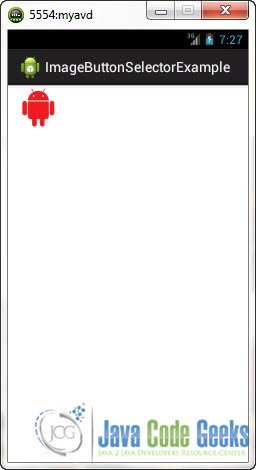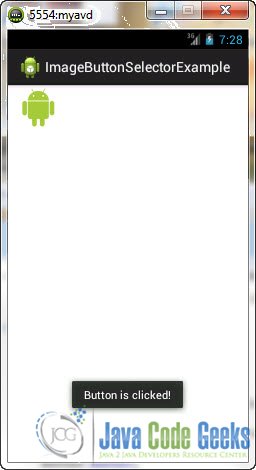Android ImageButton Selector Example
In Android you can use the ImageButton component to display a normal Button with a custom image as a background. Take a look at our previous tutorial to remember the use of ImageButton. The fact is that you can do more than just an Image which is also a button. In this tutorial we are going to use two different images that will reflect the status of one button. When the button is released, the green Android logo will be the background image of the button. When the button is pressed, the green Android logo will be the background image of the button.
For this tutorial, we will use the following tools in a Windows 64-bit platform:
- JDK 1.7
- Eclipse 4.2 Juno
- Android SKD 4.2
1. Create a new Android Project
Open Eclipse IDE and go to File -> New -> Project -> Android -> Android Application Project and click Next.
You have to specify the Application Name, the Project Name and the Package name in the appropriate text fields and then click Next.
In the next window make sure the “Create activity” option is selected in order to create a new activity for your project, and click Next. This is optional as you can create a new activity after creating the project, but you can do it all in one step.
Select “BlankActivity” and click Next.
You will be asked to specify some information about the new activity. In the Layout Name text field you have to specify the name of the file that will contain the layout description of your app. In our case the file res/layout/main.xml will be created. Then, click Finish.
2. Adding a picture in the appropriate project folder
As you would have noticed in the Package explorer, there are 4 folders that contain the image resources of the project :
res/drawable-hdpires/drawable-ldpires/drawable-mdpires/drawable-hdpi
You can copy the images you want to put in you’re application in any one of these folders. Android SDK will automatically recognize any images you put on any one of these folders as drawable resources. So, copy the images in the folder you want. If the image does not appear in the Package Explorer under the folder you’ve copied it into, right click on the project name and select Refresh. Now the image should be under the correct folder. As you can see, I’ve three images in res/drawable-hdpi:
3. Create the Selector for different button states
We want to use the Selector component as a drawable resource in our main.xml file. Right click on the res/drawable-hdpi folder and select New -> Other -> Android -> Android XML File:
And provide the requested attributes as shown in the picture below, and Click Finish:
As you will notice, on the Package Explorer a new folder has been created (res/drawable) that contains mybutton.xml:
So now mybutton.xml is a drawable resource. Open that file and paste the following code:
<?xml version="1.0" encoding="utf-8"?>
<selector xmlns:android="http://schemas.android.com/apk/res/android">
<item android:drawable="@drawable/android_logo_red" android:state_pressed="true"/>
<item android:drawable="@drawable/android_logo_green"/>
</selector>4. Create the main layout of the Application
Open res/layout/main.xml file :
And paste the following code :
<?xml version="1.0" encoding="utf-8"?>
<LinearLayout xmlns:android="http://schemas.android.com/apk/res/android"
android:layout_width="fill_parent"
android:layout_height="fill_parent"
android:orientation="vertical" >
<Button
android:id="@+id/button"
android:layout_width="wrap_content"
android:layout_height="wrap_content"
android:background="@drawable/mybutton" />
</LinearLayout>Now you may open the Graphical layout editor to preview the User Interface you created:
5. Code
Go to the java file that contains the code of the activity you’ve just created:
And paste the following code:
package com.javacodegeeks.android.imagebuttonselectorexample;
import android.app.Activity;
import android.os.Bundle;
import android.widget.Button;
import android.widget.Toast;
import android.view.View;
import android.view.View.OnClickListener;
public class MainActivity extends Activity {
Button button;
@Override
public void onCreate(Bundle savedInstanceState) {
super.onCreate(savedInstanceState);
setContentView(R.layout.main);
addButtonListener();
}
public void addButtonListener() {
button = (Button) findViewById(R.id.button);
button.setOnClickListener(new OnClickListener() {
@Override
public void onClick(View view) {
Toast.makeText(MainActivity.this,"Button is clicked!",Toast.LENGTH_SHORT).show();
}
});
}
}The above code is pretty straight forward. When we press the image button, a short message will be displayed.
6. Run the application
This is the main screen of our Application. Remember that the image is also a button:
Now, when you press the button and keep it pressed:
When you leave the button :
Download Eclipse Project
This was an Android ImageButton Selector Example. Download the Eclipse Project of this tutorial: AndroidImageButtonSelectorExample.zip

